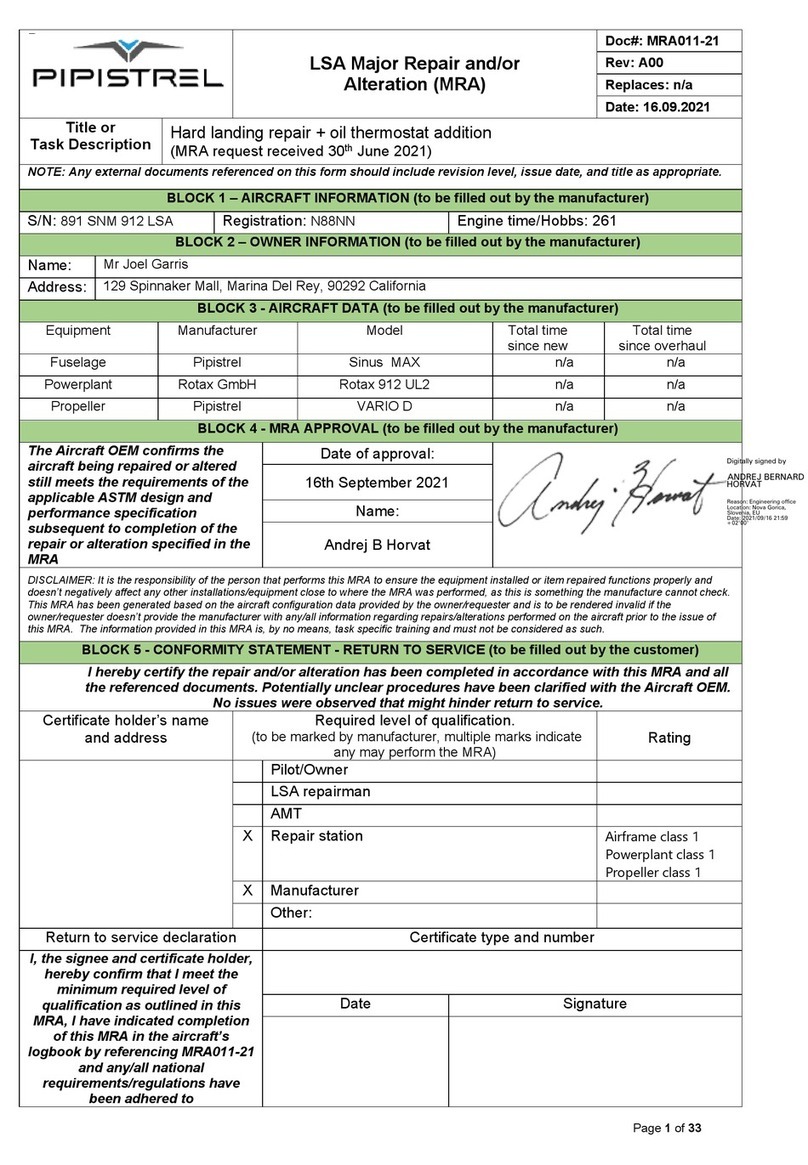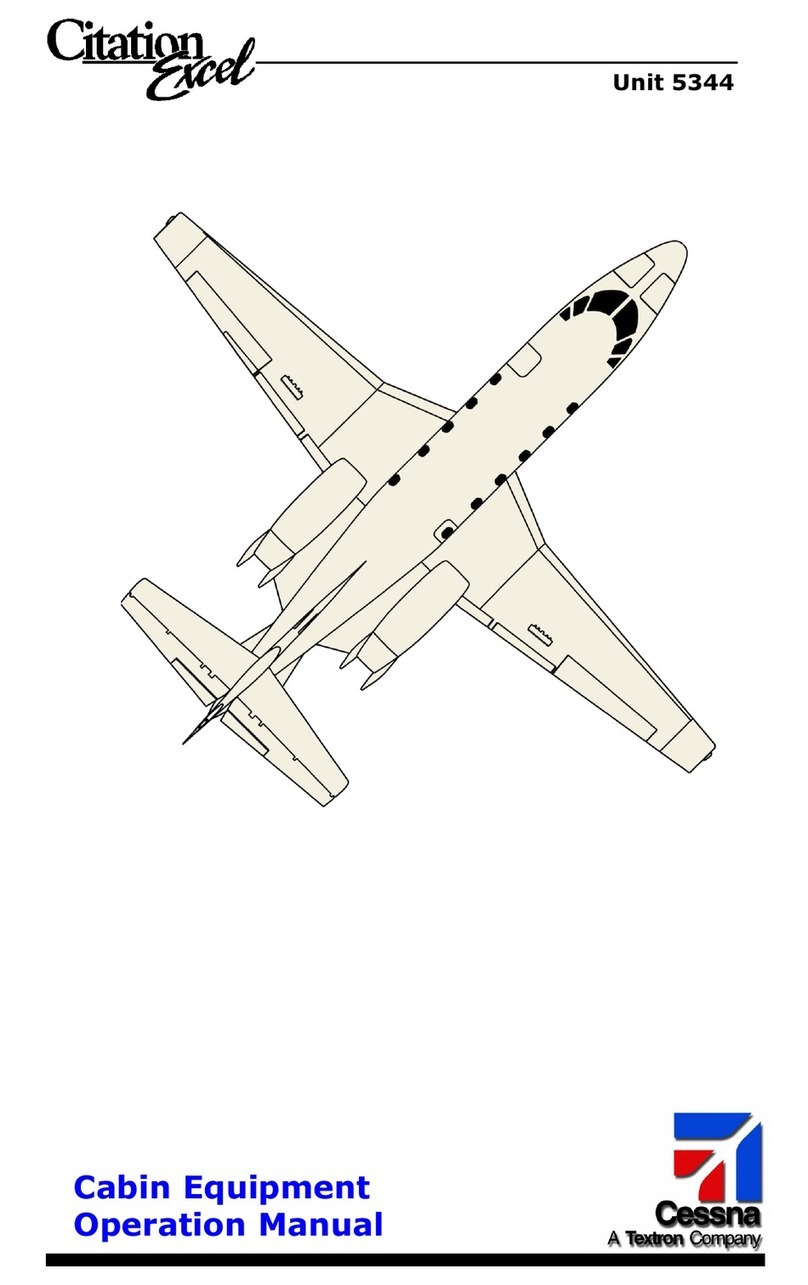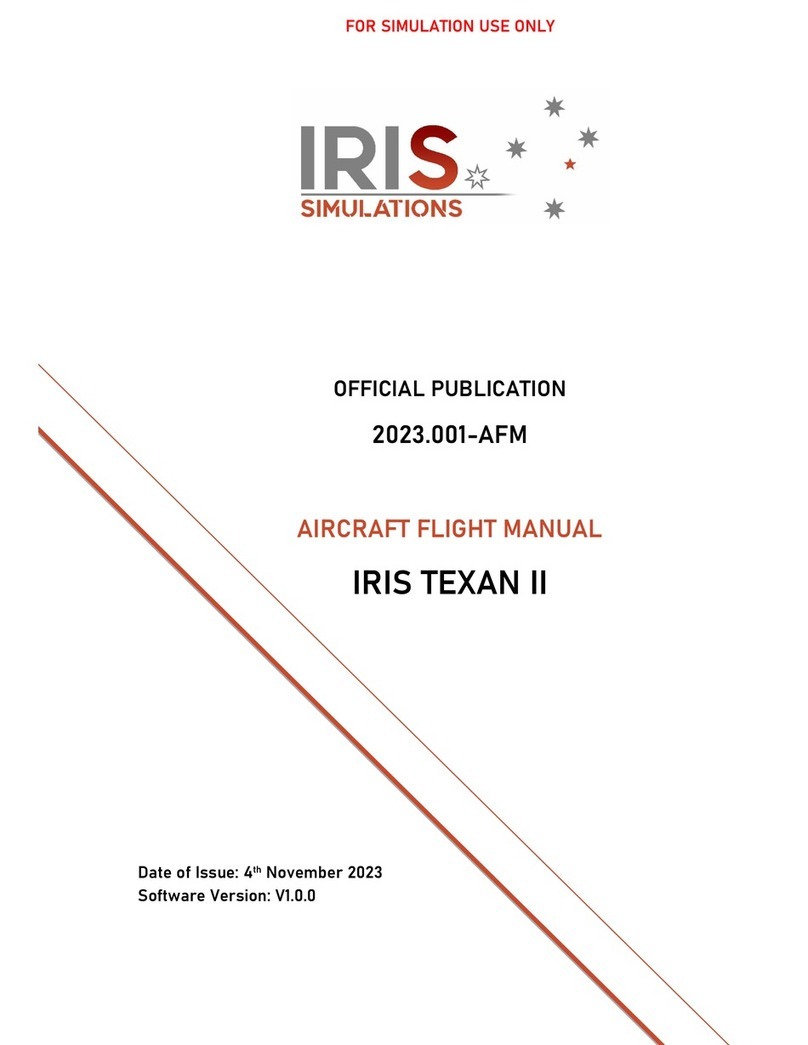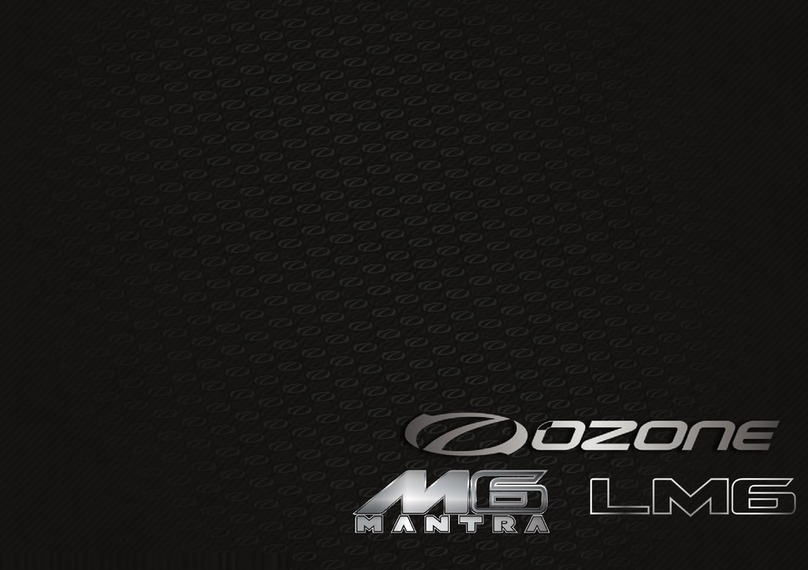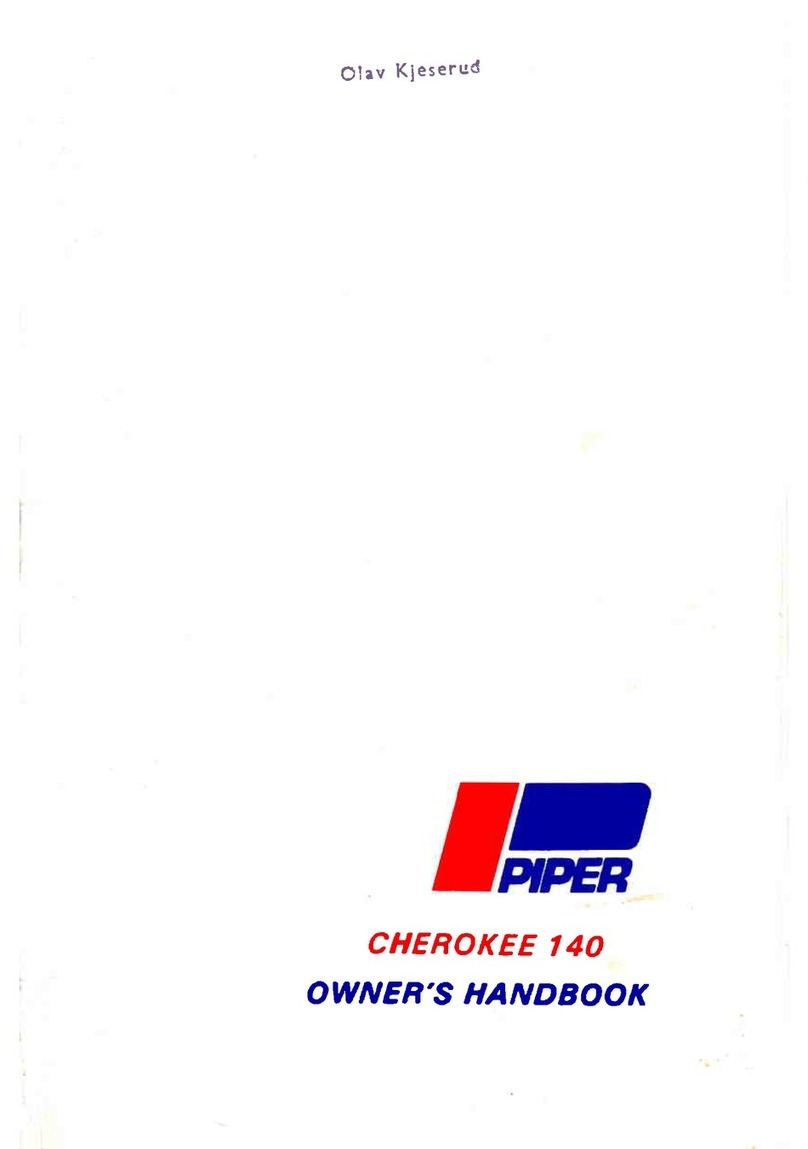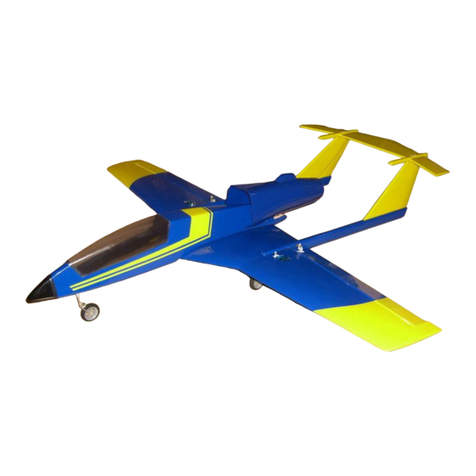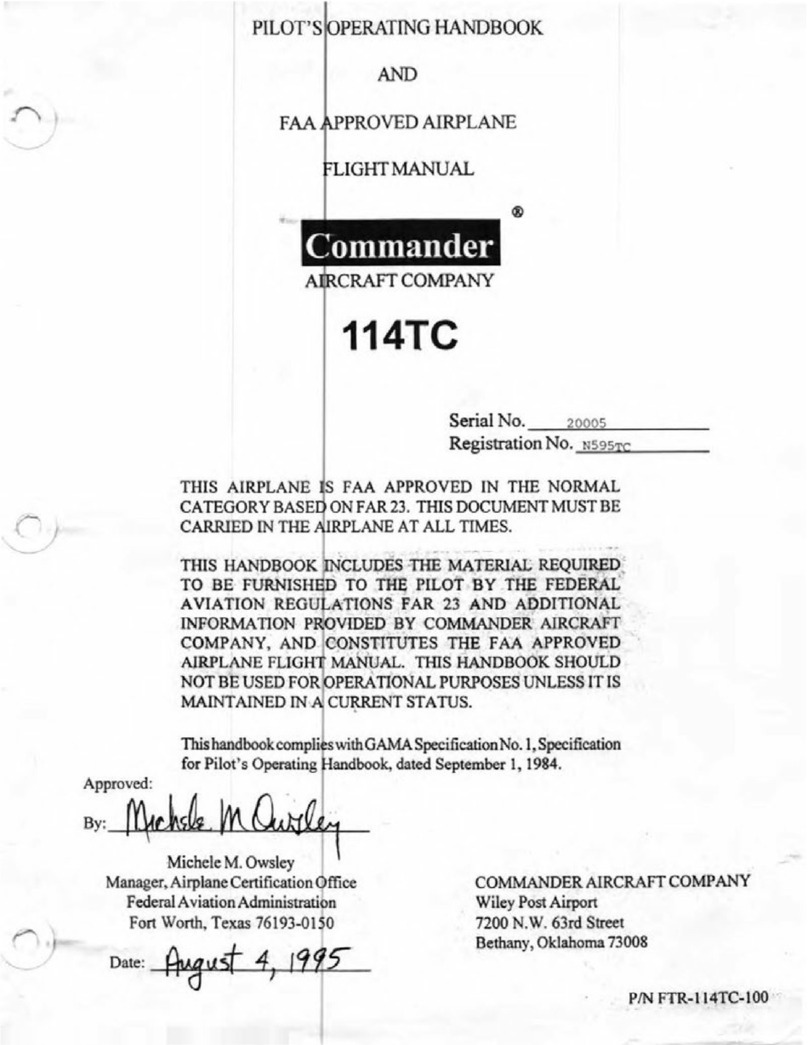Aeroplanes DAR DAR-Solo series Technical specifications

Aeroplanes DAR ltd.
Brief Flight Manual DAR –Solo
Page 1 of 25
BRIEF FLIGHT MANUAL
DAR-Solo series
Sofia
2015

Aeroplanes DAR ltd.
Brief Flight Manual DAR –Solo
Page 2 of 25
TABLE OF CONTENTS
Introduction 3
Limitations and Safety Information 4
General View of DAR-Solo series 6
Ignition 7
Engine warm up 8
Taxiing 9
Flight 10
Take off 10
Horizontal flight 11
Landing Approach 12
Landing 13
Common Mistakes 16
Take off 16
Landing 17
Probable Special Cases 18
During Take off 18
In flight 19
Fire 21
Random increase in Propeller RPM 22
Exploitation Limits 23
Notes 25

Aeroplanes DAR ltd.
Brief Flight Manual DAR –Solo
Page 3 of 25
Introduction
This Manual is intended for everyone who flies and maintains
the DAR-Solo series airplane with one of the offered engines:
Hirth F-33 BS (28 HP) - single cylinder, two-stroke engine, air-
cooled
or
Polini Thor 250 DS (36HP) - single cylinder, two-stroke engine,
water cooled
The Manual contains graphics aerodynamic characteristics of
the DAR –Solo airplane with described standard engines.

Aeroplanes DAR ltd.
Brief Flight Manual DAR –Solo
Page 4 of 25
LIMITATIONS AND SAFETY INFORMATION
Limitations
DAR Solo is an aircraft that falls in the LTF-UL Category.
It is designed to be used for any maneuvers as:
Normal flying maneuvers;
Stalls (except whip stalls); and
Lazy eights, chandelles, and steep turns, in which the angle
of bank is not more than 60 degrees.
The following limitations are imposed on the speeds and loading
of the airplane:
VS1 = 55 km/h
VSF = 51 km/h
VNE = 150 km/h
VA=109 km/h
VF = 92 km/h
VFE=83 km/h
Max Wind Limits = 5 m/s
Engine Limitation = no negative loads more 3 sec
MTOW = 260 kg
Empty Weight = 140 kg
Load Limitation = +4/-2

Aeroplanes DAR ltd.
Brief Flight Manual DAR –Solo
Page 5 of 25
Empty CG = 44,5%
MTOW CG = 33%
DO NOT FLY WITHOUT INSTALLED WING CENTRAL SECTION
FAIRING!
Do not overload the Airplane. The Max Gross Weight should
not exceed 260 kg.
Safety
For your safety read this manual thoroughly and make sure you
understand the capabilities and limitations of the airplane.
If you have any additional questions contact the manufacturer
before operating the machine.
Never fly when you don’t feel prepared for the conditions of
the flight!
Never fly under influence of alcohol or drugs!
Never fly if you have not performed a preflight inspection!
Never exceed the limitations set by the manufacturer!
DANGER!
Always monitor your airspeed!
Never fly close to stall speed or exceed Vne!

Aeroplanes DAR ltd.
Brief Flight Manual DAR –Solo
Page 6 of 25
General view of DAR-Solo

Aeroplanes DAR ltd.
Brief Flight Manual DAR –Solo
Page 7 of 25
IGNITION
Before ignition you have to do the following:
- put the wheel chocks under the wheels;
- check the availability of a fire extinguisher;
- in start-up with an electrical starter (autonomous) the
procedure must be done at the command “Clear Propeller”. You
must not push the START ignition button if you do not receive the
“Clear” answer from the start-up supervisor!
- put the levers at min (at a temperature less than 10°C – at
the support of the installed stop). Open (pull out) the mixture
control (suction ducts).
- push the START button and hold down for no more than 5-
7 seconds.
- After start-up hold choke open till the engine works in a
steady motion and take them smoothly closed. At an air
temperature greater than 20°C, the choke is not necessary to be
used.
- After start-up you have to warm up the engine, to
n=4500-5000 rev/min up to CHT=180°C (cylinder heads
temperature - CHT) and then go for a trial run.

Aeroplanes DAR ltd.
Brief Flight Manual DAR –Solo
Page 8 of 25
ENGINE WARM UP
When you reach CHT=180°C of CHT increase revolutions to
n=5000 rev/min. The increase of revolutions has to be done
smoothly, without interruption. After running at these rpm-s for
10 seconds, the lever have to be drawn backwards smoothly till a
support end (lever to min) is reached, the rpm fall has to be
monitored until they reach the minimal n min=1800-2200. This
operation must be done smoothly but in a slower than that of the
lever motion. That is the normal way to do it having in mind the
fixed pitch propeller and the two-stroke engine. After 10 seconds
push the throttle lever forward to their maximum at a rate of 1.5-
2 sec and wait till engine reaches maximum revolutions

Aeroplanes DAR ltd.
Brief Flight Manual DAR –Solo
Page 9 of 25
nmax=7500(+/-100) rev/min. CHT must stay below 280°C. In 5
seconds draw in the lever to their minimum.
In case of unusual engine run (vibrations, interruptions, etc.),
draw the lever in to their minimum and turn off ignition using the
main switch.
TAXIING
You have to start taxiing with pedals in neutral position.
Then increase engine revolutions smoothly to 5000 rev/min and
ease off the brakes. Taxing must be done at a speed of 5-7 кm/h
and engine revolutions of 5500-6000 rev/min. The taxiing speed
has to be controlled by changing the revolutions of engine and
brakes.
Avoid sharp turns or turns while airplane taxing.

Aeroplanes DAR ltd.
Brief Flight Manual DAR –Solo
Page 10 of 25
FLIGHT
Take Off
Start taxiing to the runway and stop on the center line. Apply
the brake. Set the flaps to 11°. Look around the cockpit from left
to right. Check the instruments. Smoothly push the throttle to
maximum position. Wait untill the engine reaches maximum RPM,
be sure it works well and ease off the brakes.
In the first part of the take off run keep the heading by using
the pedals.
CAUTION!
Do not use brake during take off!
When the speed increases above 20-25 km/h, the airplane
starts to “obey” the rudder, too. Motion with pedals has to become
slower and more careful. At a speed of 30-35 km/h ease pull the
stick slightly (up to ½ of its move) . The nose wheel lifts smoothly
(15-20 cm) with the increase of the speed to 40-45 km/h.
Continue the run on two wheels up to a speed of V=50 km/h and
pull the stick lightly “clear the free-play”.
Upon reaching the speed of V= 55-60 km/h take off the
airplane from the runway and hold angle of climbing.

Aeroplanes DAR ltd.
Brief Flight Manual DAR –Solo
Page 11 of 25
Upon reaching the speed of V=60-65 km/h smoothly
proceed to climbing at a speed of Vy=2-2.5 m/s.
At a H=50m decrease vertical speed to 0.5-1.0m/s and
retract the flaps.
HORIZONTAL FLIGHT
Reduce the RPM-s down to 6800 and continue climbing at a
speed of V=80-85 km/h and Vy=1.0m/s.
Turns along the pattern are done with banks of up to 30°,
decreasing the vertical speed to Vy=0.5-1.0 m/s and applying
power to increase the RPM by 500 before each turn.
In flight the RPM-s keeps 6800.
A speed of V=90-100 km/h is the cruise speed for a
horizontal flight.
The maximal airspeed under turbulent atmosphere is V=121
km/h.

Aeroplanes DAR ltd.
Brief Flight Manual DAR –Solo
Page 12 of 25
LANDING APPROACH
Upon flying over the traverse in the beginning of the runway
mark the time. After 20-25 s decrease the airspeed to V=70
km/h, at a height of H=150 m start the third turn with a
maximum bank of 30° and a plan to complete the turn at a height
of H=120 m.
After leaving the turn set an airspeed of V=65(70) km/h and
vertical speed of Vy=1.0-1.5 m/s; lower the flaps to 11°.
After 12-15 s (visual, watching closely runway approach)
start the fourth turn at a height of Н=80m, a speed of V=65(70)
km/h and a bank of up to 30° with a plan to leave the turn at a
height of Н=50m and a speed of 60(70)km/h.
Maintaining that routine, drop the flaps to 22°.
After dropping the flaps keep the airspeed at V=60(65)km/h
and vertical speed of Vy=1.5-2.0m/s, RPM 6500-7000 rev/min.
LANDING
At 5-7 m start smooth levelling of the airplane by pulling the
throttles levers backwards on min. The leveling must finish at
0.5-1 m above the runway.

Aeroplanes DAR ltd.
Brief Flight Manual DAR –Solo
Page 13 of 25
NOTE:
Landing must be on two points, with a smooth
pulling back of the stick along the descend rate of
the airplane.
The airplane touches down at a speed of V=55 km/h.
At the moment of touch down keep the stick in the same
position as before, then pull the stick back.
Upon decrease speed smoothly drop the nose wheel. The
pedals must be centered, before touch down of nose wheel.
Apply the brakes with the rate of decreasing speed.
NOTE:
1. Speed is given for Ggross=260kg in brackets
respectively.
2. We do not recommend bank over 30° with a
tank half-full of fuel.
3. When planning the landing keep the CHT
above 140°C.

Aeroplanes DAR ltd.
Brief Flight Manual DAR –Solo
Page 14 of 25
COMMON MISTAKES
Take-off
1. When you lose direction at more than 15° - abort the
take-off! It has already gone beyond the limits.
2. When you try to take-off at a slower speed –wait untill
you reach the speed needed for the airplane take-off. If speed
increase is sluggish or you have doubts about it –abort the take-
off and find the problem!
WARNING!
Do not try to take-off by all means!
3. When the climbing angle after take-off is large –the
airplane will not gather speed, the initial rate being over Vy =
3m/s. Do not pull further, hold back and push the stick slightly
forward. Fix the climbing angle and wait untill the vertical speed
“calms down”. Establish the necessary climb rate.
The actual speed supply of an engine working with its
maximal capacity exceeds that of a motionless one with 5-7
km/h.
In flight follow that rule:
- “Release” the stick, “reduce” RPM –proceed to climb down;
- “Increase” RPM, “pull” the stick –proceed to climb up.

Aeroplanes DAR ltd.
Brief Flight Manual DAR –Solo
Page 15 of 25
Landing
1. Irregular/unstable speed and project angle –after exiting
the fourth turn, drop flaps at 22°, fix a visual project angle,
examining the onset of landing runway. Fix the revolutions to n=
7000-7500 rev/min and wait to see V trend. According to
whether speed increases or decreases, operate the rod keeping in
that way speed and project angle.
2. Unreliable determination of levelling height –the result is
an airplane levelled/alligned at an incorrect height.
WARNING!
If you start levelling at a wrong height –over 2
m, hold the stick, wait for the speed to decrease
and with the rate of descend land the airplane!
NEVER try to get the airplane to the necessary
height above the ground (0,5 -1 m) by moving the
stick forward or backward –this will induce
dangerous oscillations!

Aeroplanes DAR ltd.
Brief Flight Manual DAR –Solo
Page 16 of 25
PROBABLE SPECIAL CASES
During take-off
Do not take off without a properly warmed-up engine –it is
unreliable.
If you have doubts about engine operation –abort take-off.
If the engine stops after take-off at a height of up to 15 m –
land forward in a direction with maximal drift up to 15° to the left
and right and maximal banks of up to 10°. After touch down
switch off ignition.
If there is a danger of colliding with an
obstacle, do your best to meet the blow with the
wing –by no means with the front!
If the engine stops after take-off at a height of
over 50 m –turn to the left or to right up to 90° to
land on a suitable place. Do not attempt a turn to
180° and landing in a direction opposite to that of
take-off. Before landing drop the flaps to 22° (if
possible), plan to land by parachuting. This applies
especially to landing on an unsuitable place, with a
soft ground, with grass, etc.

Aeroplanes DAR ltd.
Brief Flight Manual DAR –Solo
Page 17 of 25
In flight
If you have doubts in engine operation –abort flight, ease off
the engine operation and land.
You have to fear the speed loss more than the engine stop
itself!
If the engine stops after the first turn set a speed of
V=80(85)km/h and assess the chance to land on the runway. If
you are not sure –choose a landing place.
From a height of Н=100-150m you can fly straight for about 1km
Upon gliding, do the turns easily, with a maximal bank of up
to 30° and a speed of 10km/h greater than that of an straight
flight.
The radius of the turn is around 500-700m.
WARNING!
Once you have made your mind, do not change
it! There is nothing more dangerous than changing
your mind several times! You will not have time to
do that!

Aeroplanes DAR ltd.
Brief Flight Manual DAR –Solo
Page 18 of 25
If the engine stops after the fourth turn –assess the
possibility to land on the runway. It might be possible to land
before the runway (usually the approaches are clear).
Have in mind –land with flaps dropped to 11°, Кmax=7,5.
It is better if you do not rise flaps to 0° to increase
aerodynamic quality. This means rebalancing the airplane and
establishing a new gliding speed (faster), corresponding to the
new configuration, but which will lead to a loss of height with an
engine out of motion. The height after exiting the fourth turn
(around 80 m) is low enough.
WARNING!
In an emergency landing on an unprepared
field make sure the seat belts are tight!
Do not take off with seat belts unfastened or
unadjusted!

Aeroplanes DAR ltd.
Brief Flight Manual DAR –Solo
Page 19 of 25
Fire
Upon Ignition
In case of fire in the engine area:
- Pull the throttle to minimum;
- Switch off ignition;
- Leave the cabin as fast as you can;
- Take steps to extinguish fire.
In flight
In case of fire in the engine area:
- Pull the throttle to minimum;
- Switch off ignition;
- Take steps to land immediately no matter what the result
of the fire extinguishing is.
- After landing leave the cabin as fast as you can;

Aeroplanes DAR ltd.
Brief Flight Manual DAR –Solo
Page 20 of 25
WARNING!
In landing with an unreliable engine pay special
attention to the landing pattern!
Do not forget –you cannot go on a second
round!
You do not have an engine!
Table of contents
Popular Aircraft manuals by other brands
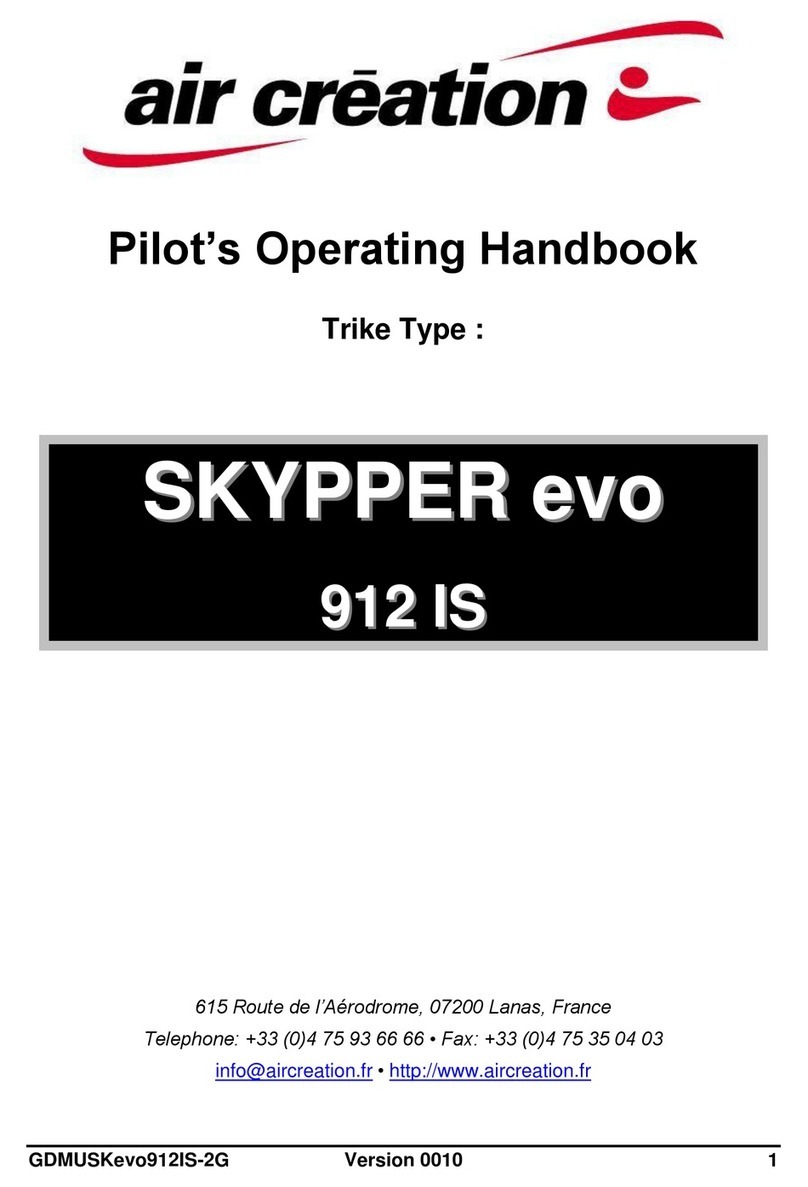
Air Creation
Air Creation SKYPPER evo 912 IS Pilot operating handbook
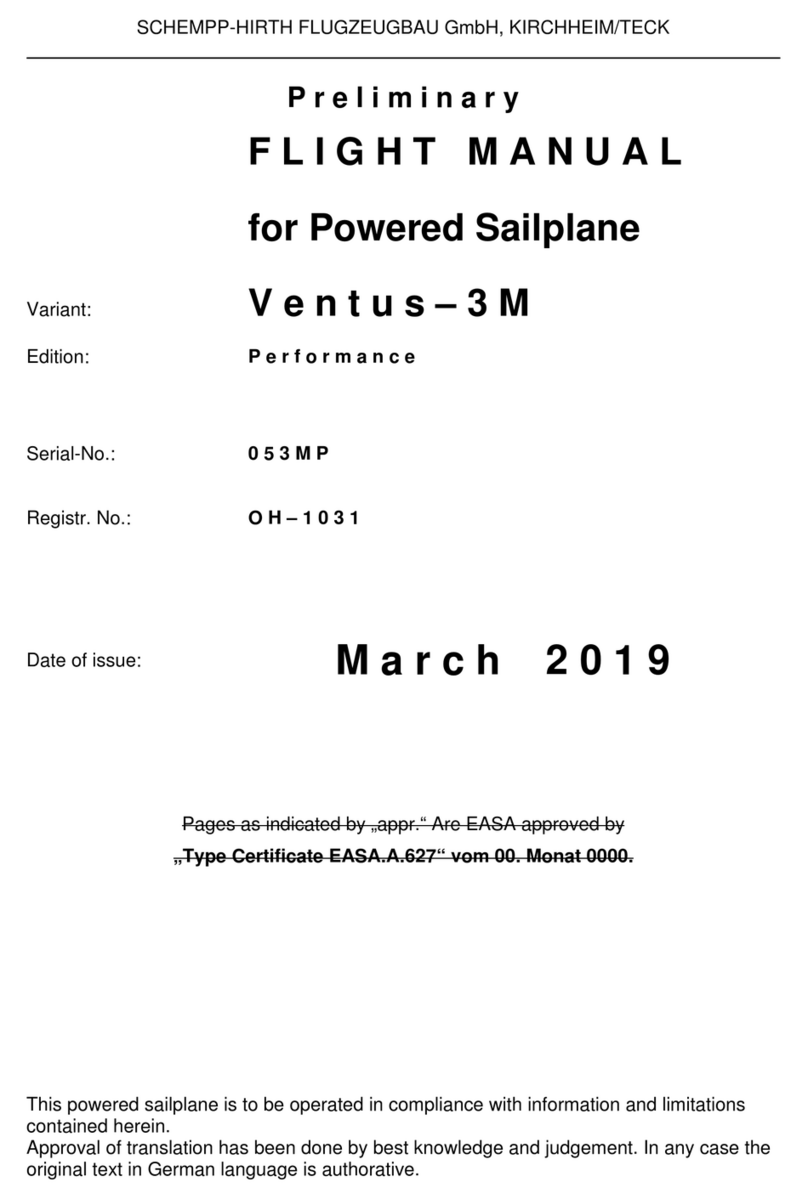
Schempp-Hirth
Schempp-Hirth Ventus-3M Performance Preliminary Flight Manual

Cessna
Cessna 182S Skylane Information manual

KANGKE INDUSTRIAL
KANGKE INDUSTRIAL SUPER KRAFT PRO-FLY 540 quick start guide

KANGKE INDUSTRIAL
KANGKE INDUSTRIAL Rearwin Speedster Assembly manual

ICP
ICP VENTURA YY-MM-62 Series Pilot operating handbook
